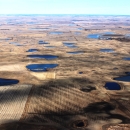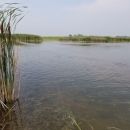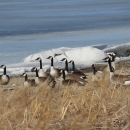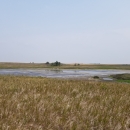About Us
Audubon National Wildlife Refuge lies in a rolling natural landscape of the Missouri Coteau and the Missouri River Slope. Much of the Refuge is mixed-grass prairie and wetlands that border Lake Audubon. The Refuge attracts large numbers of migrating waterfowl and other wildlife.
Our Mission
Each unit of the National Wildlife Refuge System is established to serve a statutory purpose that targets the conservation of native species dependent on its lands and waters. All activities on those acres are reviewed for compatibility with this statutory purpose.
Audubon National Wildlife Refuge was established by the Fish and Wildlife Coordination Act (16 USC 664) - “Shall be administered by [Secretary of the Interior] directly or in accordance with cooperative agreements… and in accordance with such rules and regulations for the conservation, maintenance, and management of wildlife, resources thereof, and its habitat thereon.” -Comprehensive Conservation Plan
Audubon National Wildlife Refuge provides food, water, shelter, and space for a variety of wildlife species. Refuge managers focus their efforts on managing the land to meet the needs of waterfowl and other migratory birds, threatened and endangered species, and resident wildlife.
Our History
On May 25, 1956, Snake Creek National Wildlife Refuge was established after construction of Garrison Dam was completed across the Missouri River. This 2.5-mile dam created a large reservoir named Lake Sakakawea, which is 368,000 acres in size. Snake Creek National Wildlife Refuge replaced some of the important wildlife habitat that was lost when Lake Sakakawea was filled. In 1967, Snake Creek National Wildlife Refuge was renamed Audubon National Wildlife Refuge to honor John James Audubon, one of the great naturalists and wildlife painters of the 19th century. Audubon spent the summer of 1843 near this area collecting bird specimens and painting pictures of northern plains wildlife.
Other Facilities in this Complex
Audubon National Wildlife Refuge part of the Audubon Wetland Management District. The District manages an array of private and fee-title land held by the U.S. Fish and Wildlife Service.






